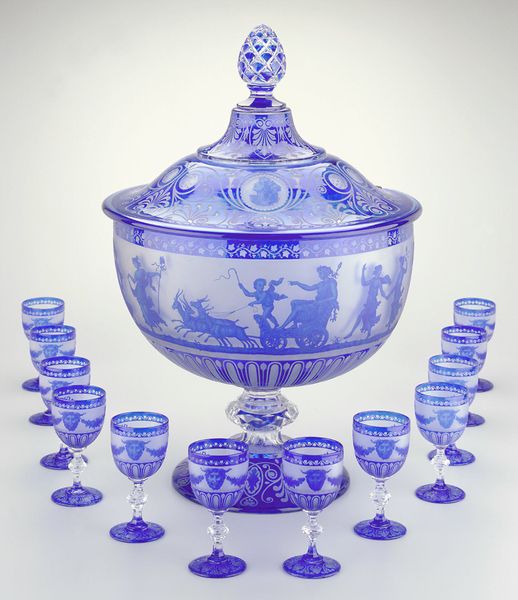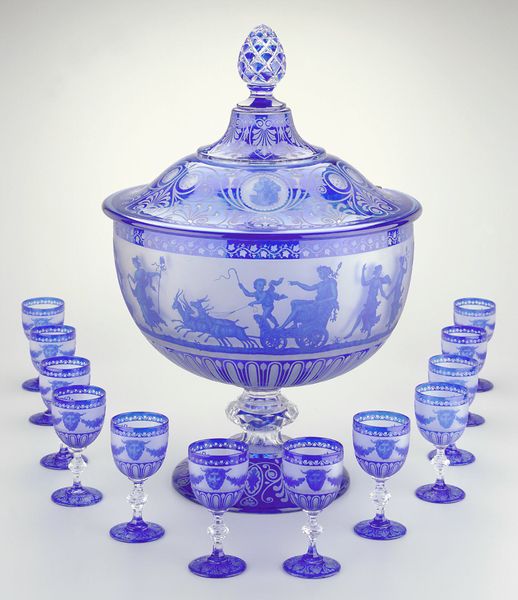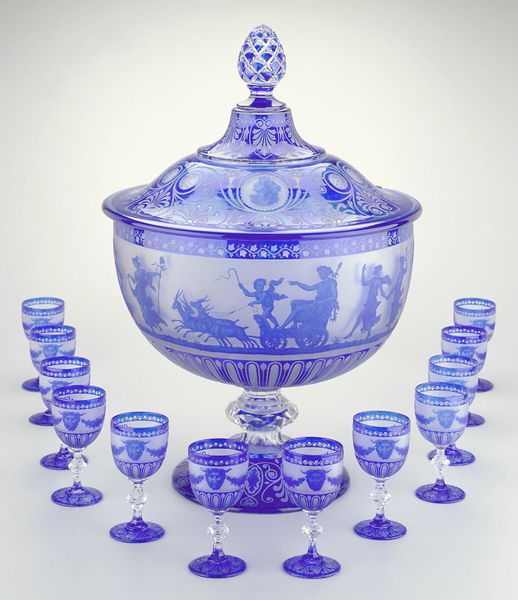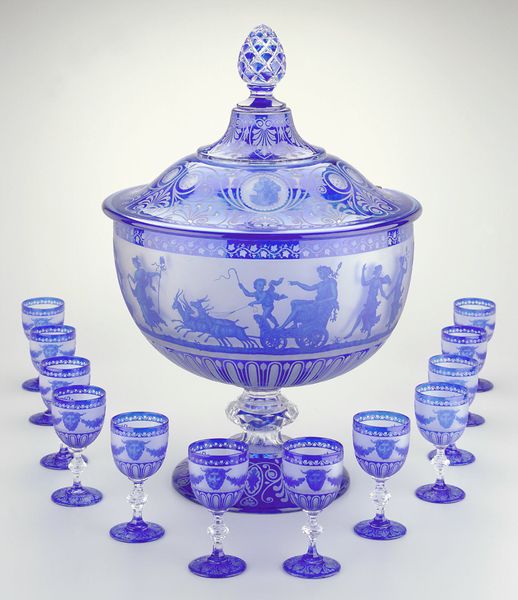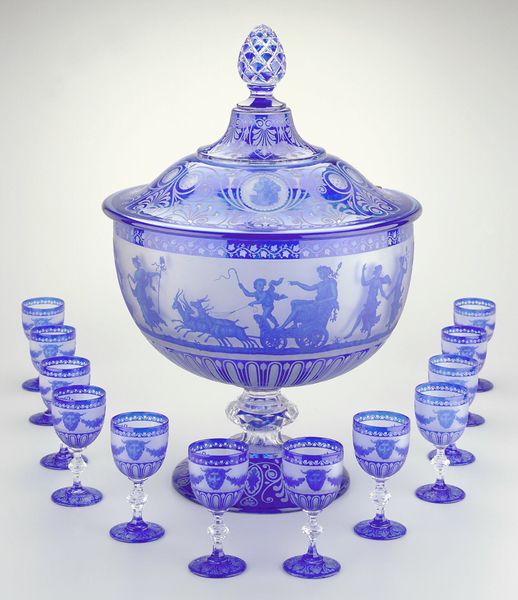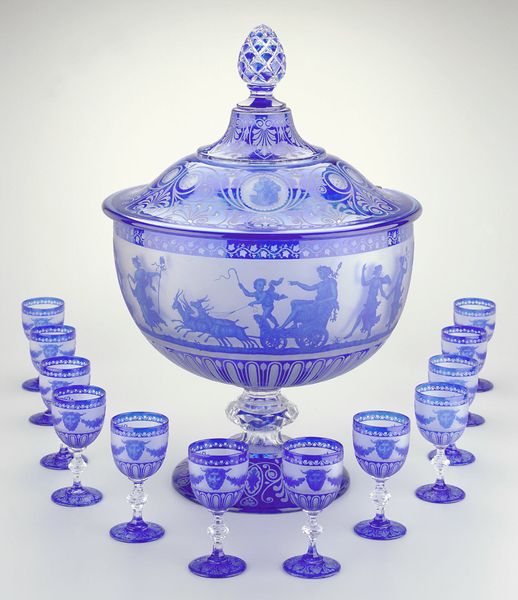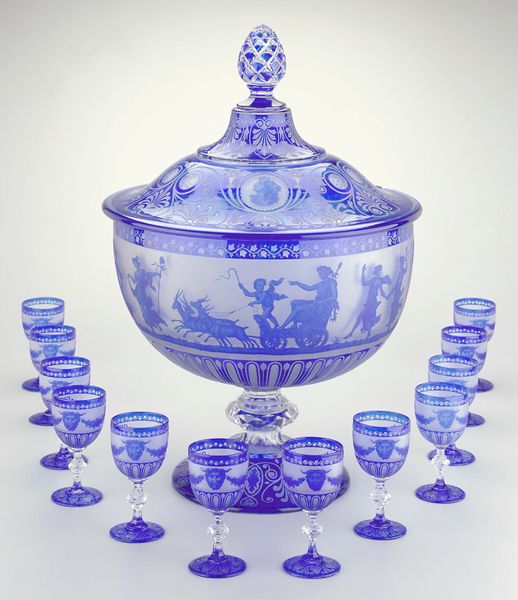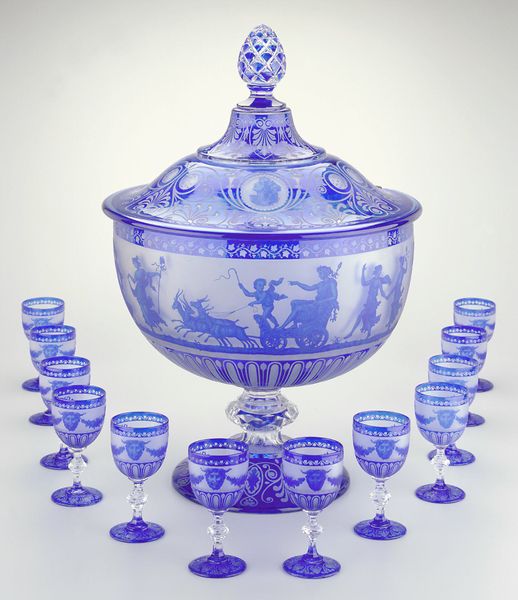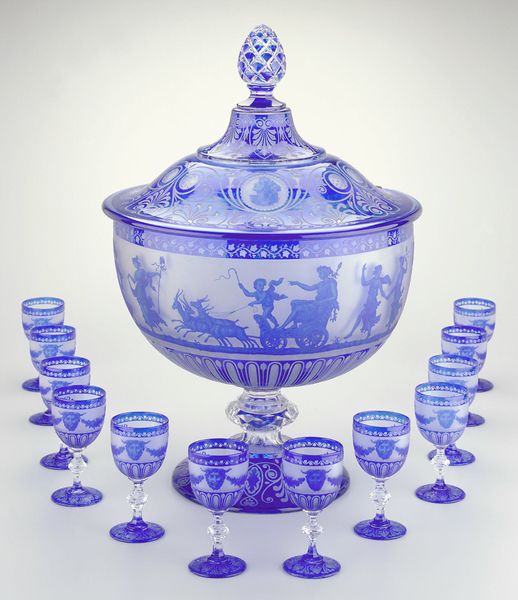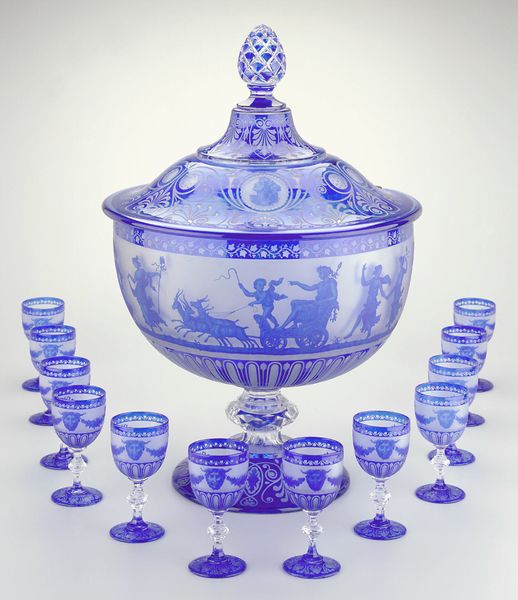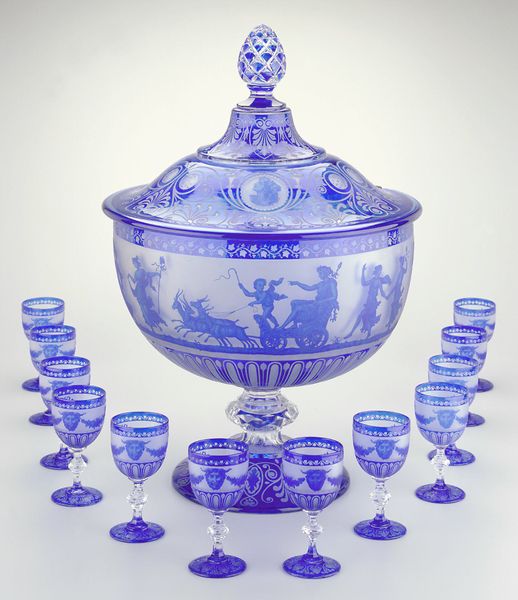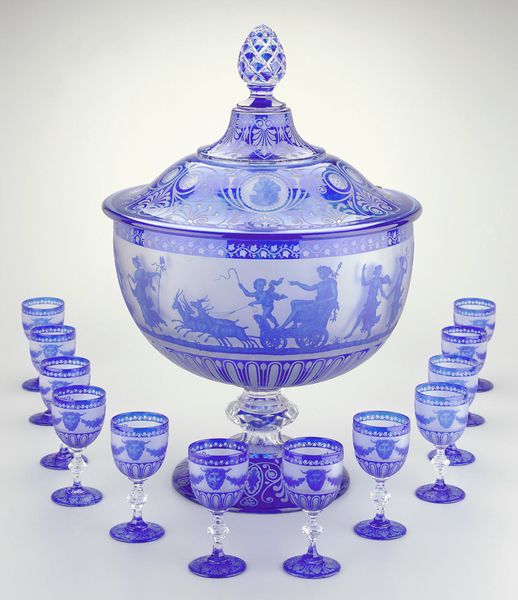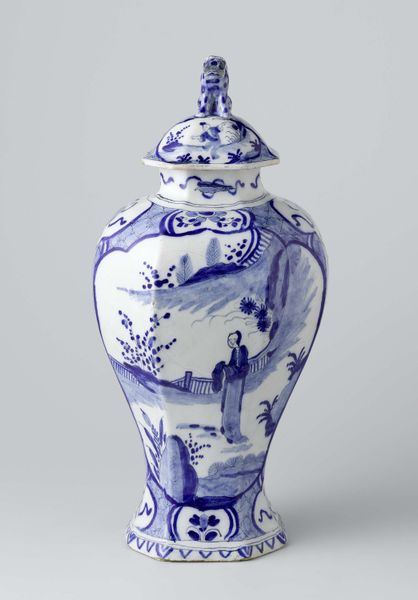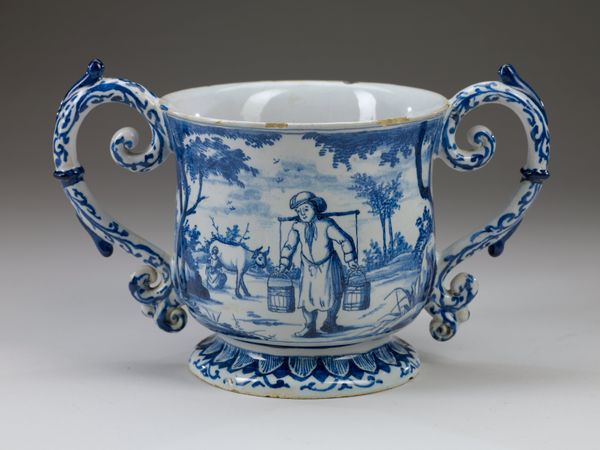
Dimensions: 4 3/4 x 2 7/16 in. (12.07 x 6.19 cm)
Copyright: Public Domain
Editor: This ornate punch goblet and its accompanying glasses were crafted in 1867 by Cristalleries de Baccarat. The ceramic-like glass, rendered in calming shades of blue, feels almost impossibly decadent. What strikes you most about this set? Curator: The very visible and specialized labor involved in creating this set speaks volumes. Each piece demanded highly skilled glassworkers. We have to consider the factory conditions, the division of labor, the specific tools used, and even the chemistry of the glass itself. Editor: So, you’re looking beyond just its aesthetic qualities? Curator: Absolutely. Think about it: The elite consumed objects like these as signifiers of their status, yet they were enabled by the labor of the working class. The goblet’s Baroque revival style evokes a sense of history and luxury, but it's crucial to ask what that revival really represents. Was it merely aesthetic, or was it a commentary on power and class? Editor: That's a really interesting point. I hadn’t considered the class implications of owning something so elaborate back then, or even now. Does the fact that it’s a punch bowl set add another layer to its meaning? Curator: Precisely. It represents social ritual and display. Punch bowls are all about communal consumption, but only for certain communities. And the use of glass itself… a material both fragile and visually stunning…highlights the careful construction and consumption of social standing. It invites a critical examination of the rituals and hierarchies of 19th-century French society. Editor: I see that the process and materials tell as much a story as the design. Thanks, I’m now appreciating this artwork on a deeper level. Curator: And hopefully you will examine art with an awareness of materiality, production, and its relationship to social life.
Comments
No comments
Be the first to comment and join the conversation on the ultimate creative platform.
